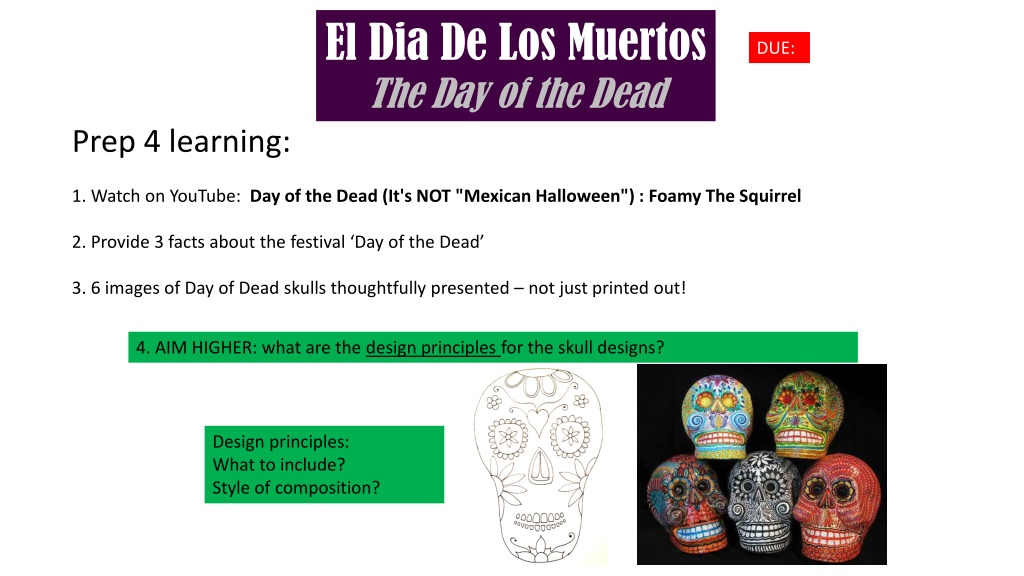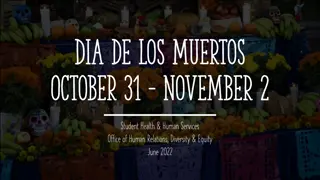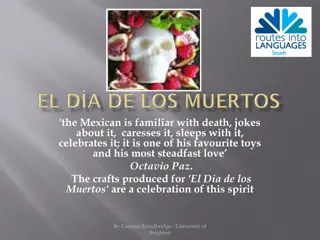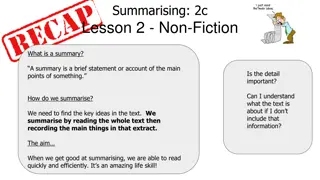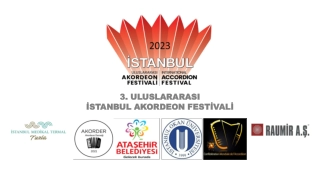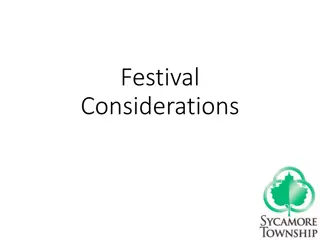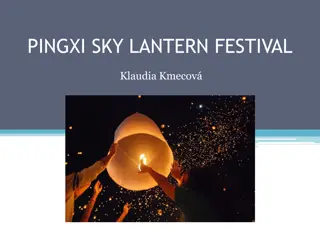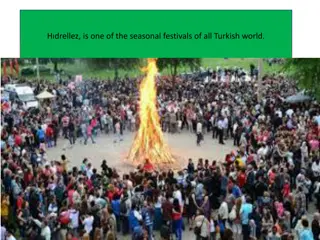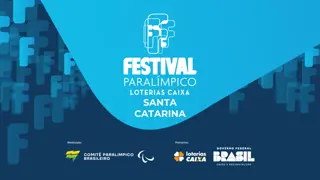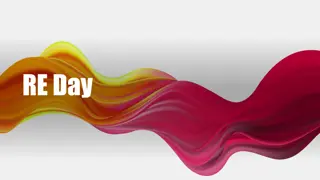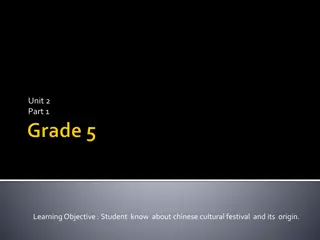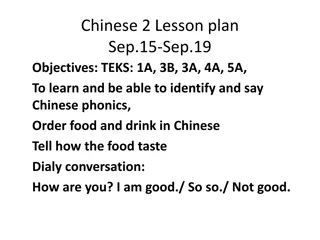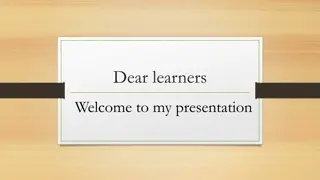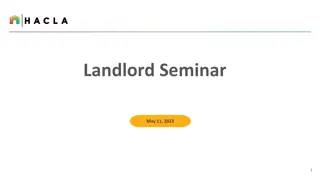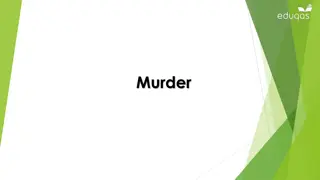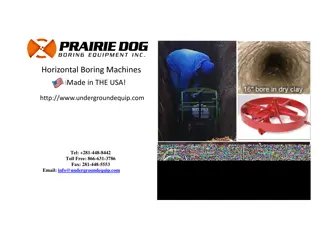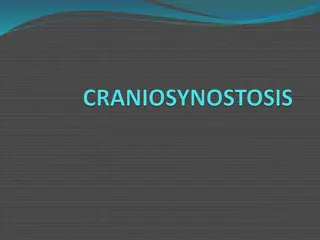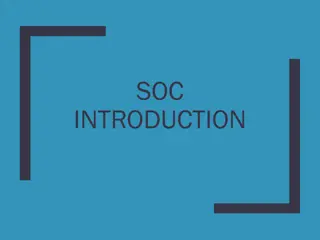Understanding El Día de los Muertos: Festival and Skull Design Principles
Explore the significance of El Día de los Muertos, uncover three key facts about the festival, view creatively presented skull images, and delve into the design principles behind the iconic skull designs. Discover the artistic elements and cultural depth of this celebrated tradition.
Download Presentation

Please find below an Image/Link to download the presentation.
The content on the website is provided AS IS for your information and personal use only. It may not be sold, licensed, or shared on other websites without obtaining consent from the author. Download presentation by click this link. If you encounter any issues during the download, it is possible that the publisher has removed the file from their server.
E N D
Presentation Transcript
El Dia De Los Muertos The Day of the Dead DUE: Prep 4 learning: 1. Watch on YouTube: Day of the Dead (It's NOT "Mexican Halloween") : Foamy The Squirrel 2. Provide 3 facts about the festival Day of the Dead 3. 6 images of Day of Dead skulls thoughtfully presented not just printed out! 4. AIM HIGHER: what are the design principles for the skull designs? Design principles: What to include? Style of composition?
Communication self-motivated dedication resourceful GT: 3/4 Orange questions GT: 5 Yellow questions GT: 6+ Green questions Art heroes analysis TASK: create one A3 sheet that includes a written analysis, visual analysis and research images TIPS: Use the differentiated analysis questions to aid your written work Don t try to copy a full piece of work but choose an enlarged section (which still shows the style) Make sure your name is on your work Make the title eye catching, relevant to your artist style(s) Choose one of your 6 images to write about sophisticated limited Well informed confident competent basic Knowledge Understanding of Art Heroes I can comment on methods I can compare and comment on the ideas and work of other artists I can think about, and share, my ideas when looking at the techniques and approaches of other artists. I can interpret and explain the ideas and meanings behind other artists work I can identify why ideas and meanings of other work are subject to different interpretations. I can confidently discuss and respond to the work of others. and approaches used by other artists recognise and show Related image I can discuss the context the work was made in and give my own opinion of the work I then use this understanding to extend my thinking and improve my practical work I can understand how, when and why a piece of art was produced (context) understanding of artwork from varied cultures and contexts I change how I explore my own work in some ways, after looking at the work of peers and artists I talk about and discuss my own art work and that of others. I evaluate my own work and that of others, giving my own view on why it was made and what it means. I provide a reasoned evaluation of the purpose and meaning of my own work and that of others. I extend my ideas in response to thinking about new possibilities and meanings in different works. I can confidently produce work with clear insight and reasoning. Analyse and Evaluate I adapt my own work by thinking about the work of others I have looked at, suggesting improvements where possible I use these evaluations to help me adapt and refine my ideas in future work I then use this to develop my own views and future artwork. I clearly communicate my own ideas, insights and views. 1 lessons + independent time hand in:
limited confident Well informed basic competent sophisticated Knowledge Understanding of Art Heroes I can comment on methods I can compare and comment on the ideas and work of other artists I can think about, and share, my ideas when looking at the techniques and approaches of other artists. I can interpret and explain the ideas and meanings behind other artists work I can identify why ideas and meanings of other work are subject to different interpretations. I can confidently discuss and respond to the work of others. and approaches used by other artists recognise and show I can discuss the context the work was made in and give my own opinion of the work I then use this understanding to extend my thinking and improve my practical work I can understand how, when and why a piece of art was produced (context) understanding of artwork from varied cultures and contexts I change how I explore my own work in some ways, after looking at the work of peers and artists I talk about and discuss my own art work and that of others. I evaluate my own work and that of others, giving my own view on why it was made and what it means. I provide a reasoned evaluation of the purpose and meaning of my own work and that of others. I extend my ideas in response to thinking about new possibilities and meanings in different works. I can confidently produce work with clear insight and reasoning. Analyse and Evaluate I adapt my own work by thinking about the work of others I have looked at, suggesting improvements where possible I use these evaluations to help me adapt and refine my ideas in future work I then use this to develop my own views and future artwork. I clearly communicate my own ideas, insights and views.
Art heroes analysis Challenge version Ensure that you complete the A3 written and visual analysis sheet But also include .. How the festival inspires you? What they make and how? What do other people think of their work? What I like about their work? What I have found out about the festival. Further reading http://www.rd.com/culture/day-of-the-dead-facts/ https://www.inside-mexico.com/day-of-the-dead-story/
THINK! A title for an exercise book A neat title Guidelines used to keep all letters the similar size A title for a creative piece Font relates to the theme
Presentation of your work Example Layout Decorate the background in the festival style A3 paper Day of the Dead Written work Typed or very neatly written IMAGE of Day of the Dead artwork Written analysis 1. 2. 3. 4. 5. 6. Paper trimmed with cutter NOT scissors Personal visual analysis drawing with colour IMAGE of Day of the Dead artwork tit No overlapping Straight IMAGE of Day of the Dead artwork IMAGE of the artwork you analysed IMAGE of Day of the Dead artwork
This marking scheme allows you to know what we are looking for in a good artist page Remember to self assess yourself as you are working through to ensure you get the best possible outcome SCORE REQUIREMENT 1 2 3 I have used art keywords and adjectives in some of my answers I have used art keywords and adjectives in most of my answers I have used art keywords and adjectives in all of my answers WRITTEN ANALYSIS 3 All of my answers are written in full sentences 3 I have proof read my writing and corrected spelling mistakes 1 2 3 My drawing/tracing is scruffy My drawing/tracing is neat My drawing/tracing is accurate and controlled VISUAL ANALYSIS 1 2 3 I have gone over some of the outlines when applying colour I show control near the edges when applying colour I have applied all colour with control 1 2 3 My presentation is scruffy My presentation is neat and tidy My presentation is thoughtful and faultless Look at the writing, cutting & sticking, titles etc PRESENTATION 1 2 3 There is a lot of empty space on my artist page I am starting to consider layout on my artist page My artist page is full and visually exciting /21 SELF TOTALS /21 PEER Teacher feedback
Complete the worksheet comparing two Day of the Dead artworks
